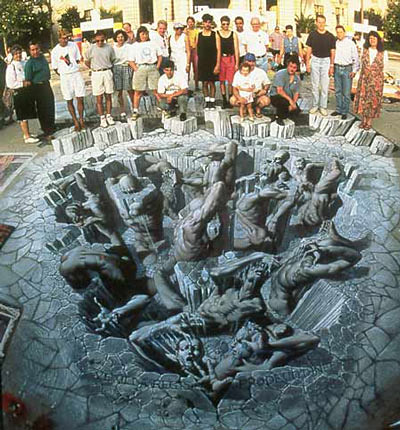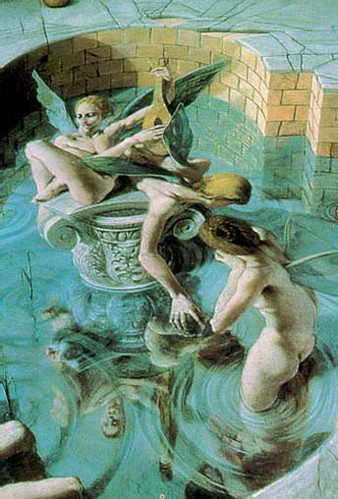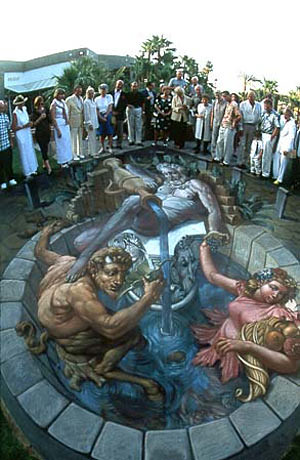
Tuesday, July 24, 2007
Sunday, July 15, 2007
unbelievable paintings

Produced by Julian Beever

"Cocito" from the Chalk It Up Festival in Pasadena, CA.
Produced by Kurt Wenner - http://www.kurtwenner.com/biography.htm

Produced by Kurt Wenner - http://www.kurtwenner.com/biography.htm

Produced by Julian Beever

Produced by Julian Beever

"Zoroaster" in Palm Desert, CA.
Produced by Kurt Wenner - http://www.kurtwenner.com/biography.htm

Produced by Julian Beever

People are actually avoiding walking in the "hole"
Produced by Julian Beever

Produced by Julian Beever

Which is the real guy & which beer is real?
Produced by Julian Beever

Produced by Julian Beever

Produced by Julian Beever

Produced by Julian Beever

Produced by Julian Beever

Produced by Julian Beever
The image below has been taken from a wrong angle:

Produced by Julian Beever

Produced by Julian Beever
Remember, both his feet in reality are flat on the pavement
Politicians Meeting Their End

Produced by Julian Beever
This drawing of a Rescue was to be viewed using an inverting mirror

girl on a beach mat.

Produced by Julian Beever

Make Poverty History drawing from the side(40 ft long)
Produced by Julian Beever

Produced by Julian Beever
Spiderman to the rescue

Produced by Julian Beever
Batman and Robin to the rescue(SO COOL)

Produced by Julian Beever
Wednesday, July 4, 2007
Butterfly Man
Netlore Archive: Emailed photos purport to show mummified remains of a fairy (aka 'butterfly man' or 'moth man') discovered in the Derbyshire countryside of England
Description: Emailed images
Circulating since: April 2007
Status: April Fools hoax
Analysis: See below
Email example contributed by Jacki D., 9 May 2007:
 Maybe not anymore but a recent discovery would suggest that they probably did. What appear to be the mummified remains of a fairy have been discovered in the Derbyshire countryside.   SEE ORIGINAL DOCUMENT |
Comments: BBC News has confirmed that the images and text above were created as an April Fools prank by Dan Baines, whose job is designing "strange and unique" illusions for stage magicians. The story of the mummified fairy's discovery was first posted in March 2007 on Baines' Website, Lebanon Circle Magic Company, where it attracted as many as 20,000 hits in a single day. After confessing to the hoax he sold the fake artifact on eBay for £280. Many people, he says, continue to insist it's real.
The prank calls to mind the infamous Cottingley Fairies hoax of 1917, wherein a pair of young British girls with too much time on their hands concocted fake photographs of tiny, humanoid fairies flitting through the air. The photos were vetted as authentic by none other than Sir Arthur Conan Doyle, author of the Sherlock Holmes series, and received an inordinate amount of publicity from a credulous press. It wasn't until 66 years later, in 1983, that one of the girls confessed that the fairy images had been hand-drawn and suspended in the air via hatpins to be photographed.
Gaff art
Baines' work is an outstanding example of what is called "gaff art," the use of taxidermy and prop-building techniques to create realistic-looking sideshow artifacts. One famous example was P.T. Barnum's half-ape, half-fish Feejee Mermaid, which astonished visitors to his American Museum in the mid-1800s. More recent examples, such as Juan Cabana's "Golden Mermaid" carcass, have won fame and infamy thanks to images circulated via the Internet.

